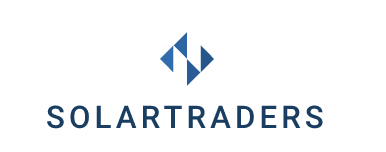Again this year, the SolarPower Europe trade group published the Global Market Outlook 2021-2025 in July 2021, from which we can take a global outlook for the PV industry.
In this article, we want to summarize for you the most important development details listed by SolarPower Europe and take a look together at what could await us in the future.
Solar market booming despite Corona pandemic
As we know very well by now, the Corona pandemic had partly negative effects on growth in different industries. However, this does not apply to the PV industry. Here, demand is still huge. The reasons for this are high demand and increasingly falling costs, with rising costs for oil, gas and coal on the other hand. The now noticeable effects of the climate crisis are also having an impact on demand.
Here’s a quick fact check:
- 39% of new power generation capacity installed in 2020 included PV systems
- one in three power plant units installed in 2020 can be attributed to PV
- the use of solar energy in relation to total electricity generation will increase to 3.1%
Price increases cannot stop the growth of the global PV industry
From SolarPower’s market analysis report, we can see that despite various price increases along the solar value chain, steady growth can be expected in the following years.
If we look back again, last year the European PV Association stated that a growth of 18% in newly installed photovoltaic capacity worldwide to 138.2 GW. Meanwhile, the forecast into 2025 is 1.8 terawatts of fixed photovoltaic systems.
The following diagram from the SolarPower report is intended to illustrate the whole thing graphically once again:

China is the predicted pioneer in the installation of PV systems. Measured was a currently existing addition of 48.2 GW in the whole of China. This accounts for more than one third of the global market. In contrast to China, the USA, Vietnam, Japan and Australia have a much smaller share. In sixth place is Germany with around 4.9 GW of new capacity added in 2020. While there was actually strong growth in all European countries within the PV industry, India saw a decline from 8.8 gigawatts to 3.9 gigawatts of newly installed photovoltaic capacity.
According to SolarPower, a gigantic value of 773.2 gigawatts was reached in 2020 in terms of global cumulative photovoltaic capacity. Here, three-quarters of a terawatt was exceeded for the first time in history. For this reason, the forecasts for 2022 are over one terawatt. By the end of 2025, the world should already be equipped with up to 2.15 terawatts of solar energy. However, this can only be achieved if the planned green hydrogen generation plants are slowly put into action. These plants, worth $1 billion, are to be installed in Abu Dhabi. An 800 MW solar field is to drive the production of green ammonia.
In the following table, we have summarized for you the forecast growth in gigawatts based on China and the USA for the coming years:
| 2021 | 2022 | 2023 | 2024 | 2025 | |
| China | 71 GW | 147 GW | 317 GW | 408 GW | 510 GW |
| USA | 43,3 GW | 68,8 GW | 96,8 GW | 122,3 GW | 147,8 GW |
Furthermore, it is predicted that in addition to the countries that are already installing PV products today, countries such as Denmark, Greece and Turkey will also join the gigawatt market club. As a result, the number of countries installing PV products will steadily increase over the coming years. Last year, the measured number of countries that recorded more than one gigawatt of PV additions was 18, compared to a total of 17 countries in 2019 and only 11 countries in 2018. According to the trade group, even imminent price increases of raw materials and shortages of polysilicon cannot stop growth.
In turn, solar installation volumes are nevertheless also expected to decline, similar to India, within the following countries:
- Japan
- Australia
- South Korea
- Taiwan
- Ukraine
Polysilicon shortage will not stop growth, but it will continue for at least the full year
As we noted in the section above, the shortage of raw materials will also not have a major impact on the growth of the solar industry. However, according to SolarPower, the shortage of polysilicon is expected to continue for at least the complete year 2021. Nevertheless, it is unlikely that this shortage will lead to further price increases. While these prophesies sound very optimistic, the trade group justifies its assumption by saying that it appears that prices have peaked. If the price of solar modules is too high, solar parks planned by private companies and not subsidized will not proceed with their construction. This phenomenon is known to individual solar manufacturers.
Conclusion
The solar market continues to grow unstoppably. Some countries will expand their PV share internally, which will keep them growing steadily. China is expected to remain our top rider. Nevertheless, countries like the US can also keep up in the long run. It is to be expected that the climate crisis will cause and change quite a bit within the solar industry. Solar modules from major manufacturers are constantly being optimized and adapted to progress at a breakneck speed. We are particularly curious about developments in the next few years.
References
Sandra Enkhardt ? PV-Magazin; Solarpower Europe: Preissteigerungen können globalen Photovoltaik-Zubau nicht stoppen ? mehr als 200 Gigawatt für 2022 erwartet; 21.07.2021; https://www.pv-magazine.de/2021/07/21/solarpower-europe-preissteigerungen-koennen-globalen-photovoltaik-zubau-nicht-stoppen-mehr-als-200-gigawatt-fuer-2022-erwartet/
Max Halle ? PV-Magazin; ?Polysilicon shortage will continue through 2021?; 22.07.2021; https://www.pv-magazine.com/2021/07/22/polysilicon-shortage-will-continue-through-2021/
Max Halle ? PV-Magazin; Plans for $1bn solar-powered green hydrogen and ammonia in Abu Dhabi; 25.05.2021; https://www.pv-magazine.com/2021/05/25/plans-for-1bn-solar-powered-green-hydrogen-and-ammonia-in-abu-dhabi/
baulinks; Global Market Outlook Solar Power 2021-2025; 25.07.2021; https://www.baulinks.de/webplugin/2021/1126.php4
